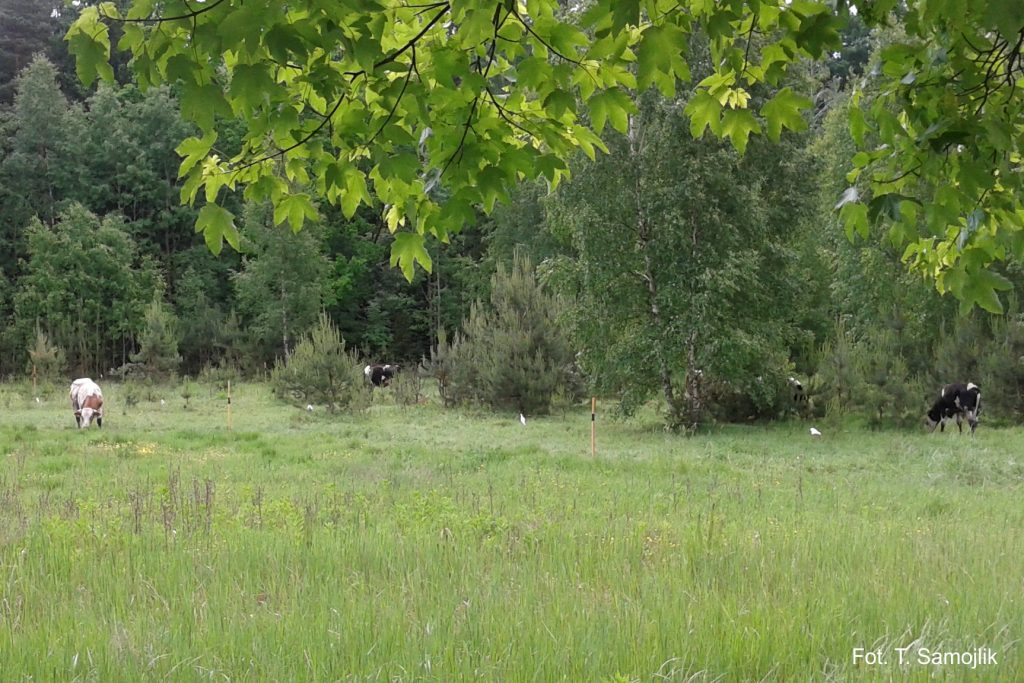| Project duration: | 2014-2017 |
|---|---|
| Project status: | Active |
| Project co-investigators: |
Dr hab. Dries Kuijper Dr Tomasz Samojlik |
The role of livestock grazing in modifying woodlands of Białowieża Primeval Forest in the last five centuries
The project aims at retracing the role of long-term past pasturing of livestock in Białowieża Primeval Forest (BPF) on the dynamics, species composition, and structure of forest ecosystems in the 16th-20th centuries. Our research will test the hypothesis that livestock grazing in the last five centuries left significant and visible traces in forest structure and composition of forest floor vegetation. We expect that the forest in the outer belt of 2-3 km along borders and around villages experienced the strongest impact of livestock grazing. We also expect to find synergistic interactions and cumulative effects of pasturing and other forms of human impacts on BPF.
In this project, we plan to employ the following methods:
(1) We will survey the Polish and foreign archives and conduct a thorough review 19th/20th century literature for documents concerning the pasturing of livestock (cattle, horses, sheep, goats, pigs) in the woodlands of BPF from the 16th to the 20th centuries. The data obtained (number of animals pastured in different periods, villages that had the right to pasture, area where this activity was allowed) will allow to quantify the intensity of such utilisation in the last five centuries.
(2) We will interview elderly foresters and dwellers of villages located inside and on the outskirts of the forest to gather information on areas that were before 1973 (when pasturing was banned) connected with pasturing, on numbers of animals pastured, roads used to drive animals and the chronology of this utilisation.
(3) In the managed part of the forest, we will conduct a field survey on transects to measure the tree stand characteristics possibly connected with pasturing history.
(4) In the protected are of Białowieża National Park, we will measure the legacy effects on tree stand structure and herbaceous vegetation in plots located in areas which, before 1921 (establishing the reserve) received most intensive cattle grazing compared to control plots in areas not impacted by pasturing.
(5) We will combine the results of our study with the results of the palynological study (conducted in the frames of the project „Environmental history of Białowieża Primeval Forest in the light of palaeoecological research”) to draw a wide (both spatially and chronologically) picture of the history of livestock grazing in BPF.
(6) We will synthesize all information gathered in the project using statistical and GIS methods to answer the question what was impact of centuries long cattle pasturing on forest on present day forest and its areal extent.
The project will be the first – to our knowledge – interdisciplinary study assessing the role of livestock grazing in shaping forest ecosystem in such a long-term scale, with results validated by several independent sources of information (historical written sources, forest inventories, interviews, questionnaires, botanical and ecological surveys in combination with palynological data from other studies) and conducted in the unique setting of the best preserved European lowland temperate forest. We will place the results of this study in the broader context of other factors affecting forest ecosystem of BPF, such as climate, fires, traditional use by humans, browsing by wild ungulates, and modern forest exploitation. The results of this project will contribute to the ongoing discussion on the role of grazing by both wild ungulates and livestock in shaping European forests, which has significant implications in the current forest management and nature conservation in general.

